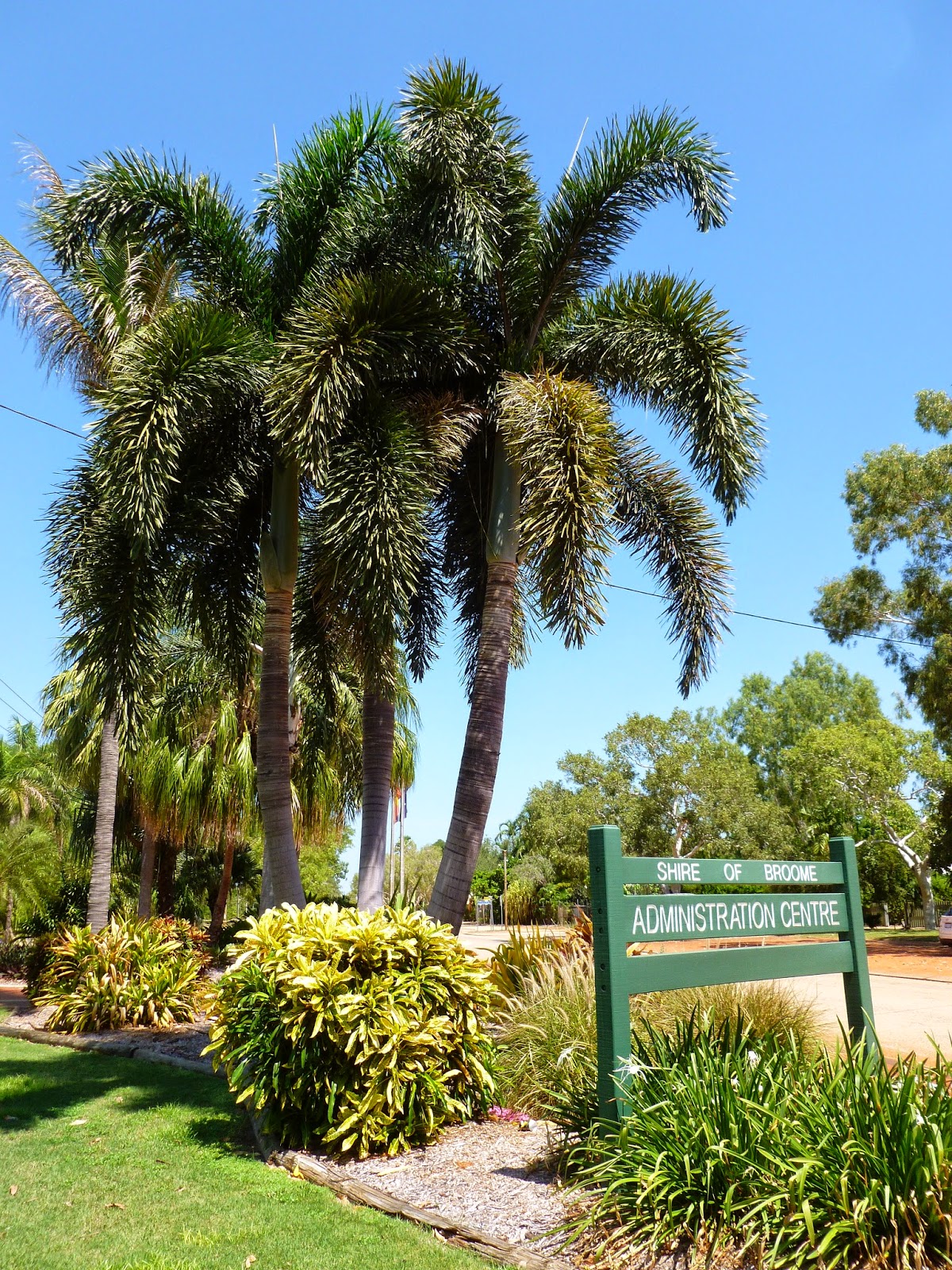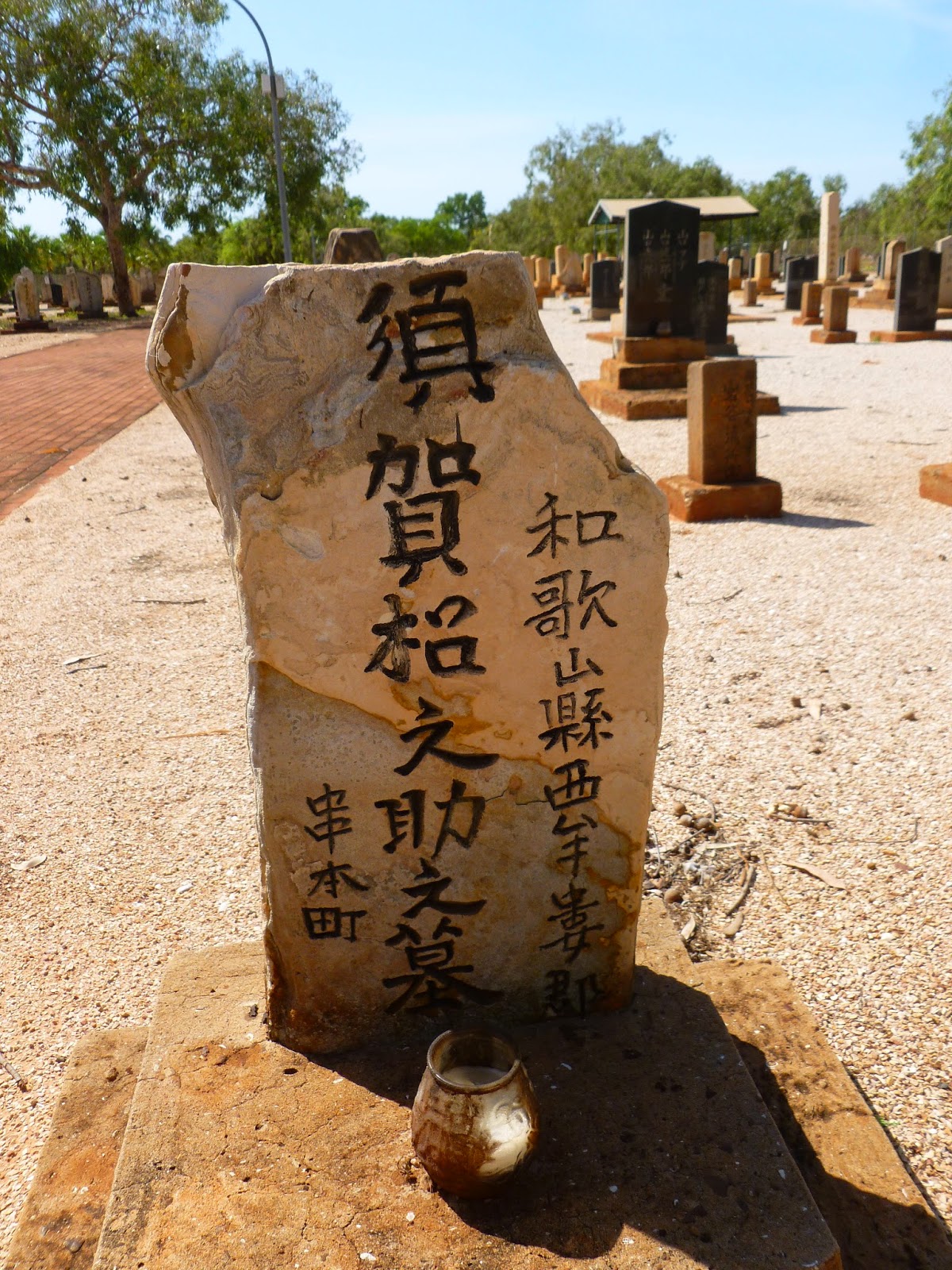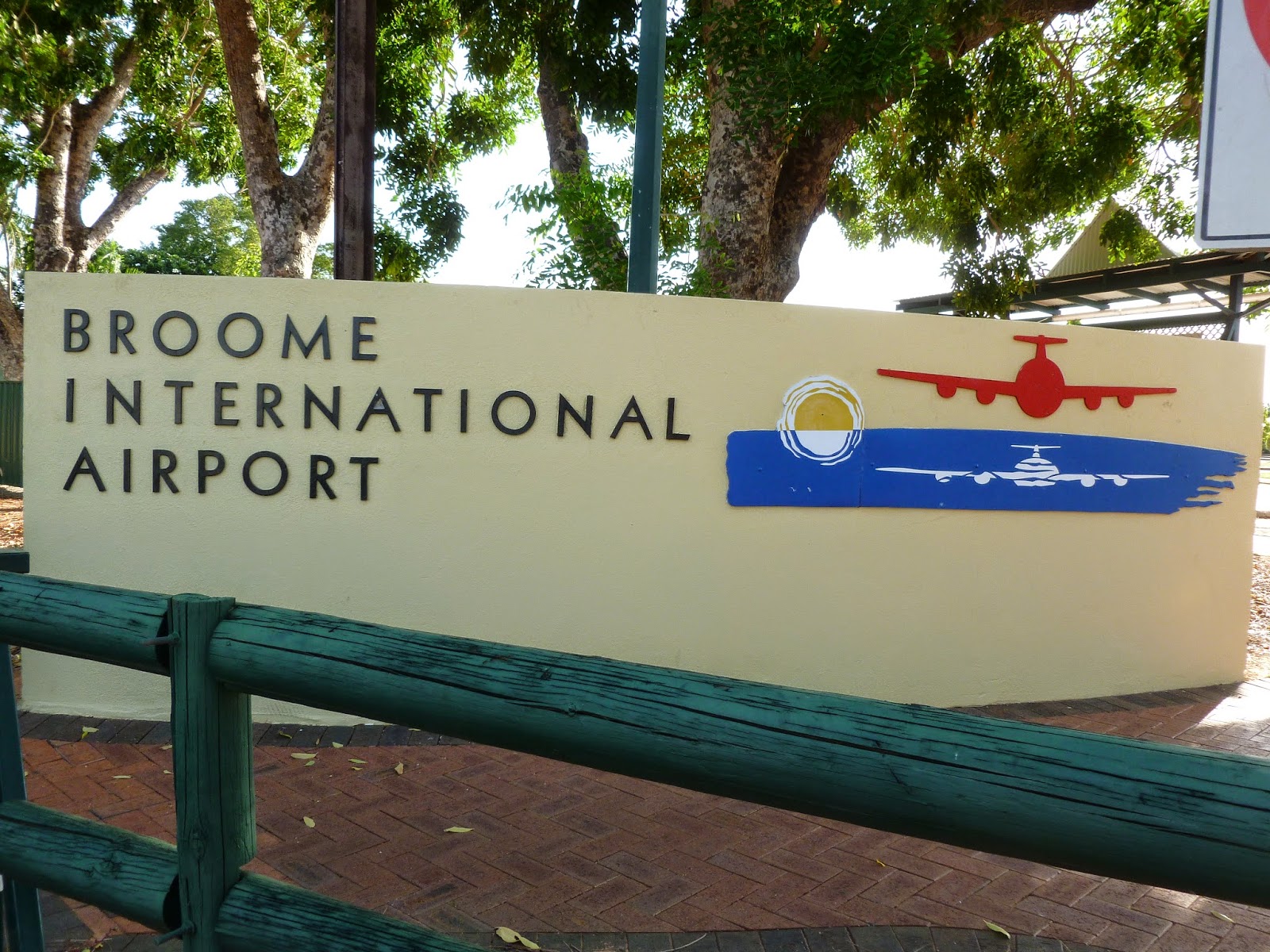 |
| I met this frog one evening in Broome. |
 |
| Frangipani trees are common. |
One of my strongest memories of Broome will be the heat and
humidity. Even the bus schedule varies with the wet (mid October to April)
and dry (May to mid October) seasons, with greater service in the dry, the main
tourist season.
 |
| One of Broome's boab trees, this one planted in 1897. |
During my visit in April it didn’t take long after a shower to
be damp with sweat again. As darkness fell, the humidity tended to rise
noticeably. Walking was guaranteed to soak a person's clothing.
 |
| Town Beach. |
Since the buses do not run until nearly 11 a.m. on
Sunday I walked to Town Beach that day. At Fong’s General Store I got a frozen
juice bar. My face must have been red as one of the staff asked if I needed a
chair to sit down. Another day a woman said hello and asked where
I was going and if I had a car. Maybe she too was wondering if I should be
wandering around in the heat.
 |
| Broome Shire Offices. |
Broome is an isolated town 2200 km north of the Western Australian capital of Perth. The resident population of the town is 15,857 according to the web site of the Broome Shire. During the peak season the population triples.
Broome's main attraction for me was its unique culture and history. From its founding in 1883 Broome has been multicultural, not always harmoniously.
 |
Pinctada maxima on cushion & smaller shells on top.
|
 |
| Aboriginal woman diver. |
Australia's largest mother of pearl shell, the Pinctada maxima,is found in the Broome area. Broome was built on shelling, the harvesting of pearl shells to make buttons. This industry, starting in the 1860s, was reliant on the forced labour of local Aboriginal people, mainly women and children, and indentured Asian workers.
 |
| Acknowledgment of the exploitation and abuse of Aboriginal people by the pearling industry. |
 |
| Dive boots & helmet. |
By the late 1800s divers who held their breath were replaced
by hard hat divers and the Japanese came to dominate that dangerous occupation.
Broome's Japanese cemetery is the final resting place of over 900 divers.
 |
| One of two restored pearl luggers. |
 |
| Japanese cemetery. |
In the 20th century two world wars and the advent of
plastics led to the collapse of the shelling industry which was eventually
replaced with a cultured pearl industry. In WWII Broome suffered 4 Japanese air
raids and during the war the resident Japanese were interned. At that time “Japtown”
became “Chinatown”.
 |
| Asian look bus stop. |
The history of Broome can be explored in the local
Historical Society Museum, the Sisters of St. John of God Heritage Centre and Relationships Exhibition,
a pearling lugger tour, the Japanese, Chinese and Pioneer cemeteries, and the streets of Chinatown.
 |
| One of Chinatown's original buildings from the 1890s. |
 |
| Ready for the show. |
A traditional Broome experience I took in was attending an
open air movie in the 1916 Sun Picture Gardens where old projection equipment is on display.
 |
| Old projection equipment. |
 |
| Camel rides for tourists. |
Broome has two beaches, Town and Cable, and the bus service runs between them. At Cable Beach several companies offer camel rides for tourists and one section of the beach is clothing optional. The town is also a centre for adventure tours of the region.
 |
| Walking to the airport. |
On my last day in Broome a 10 minute walk from my
accommodation brought me to Broome International Airport. After a quick change
of clothes I was ready for departure. As the plane took off over Cable Beach I
said farewell to Broome, a place I am glad I visited.
 |
| Broome International open air departure lounge. |


















You have so many travel adventures, Marilyn. You always see and learn so much. Good for you! Happy trails to you ...
ReplyDelete